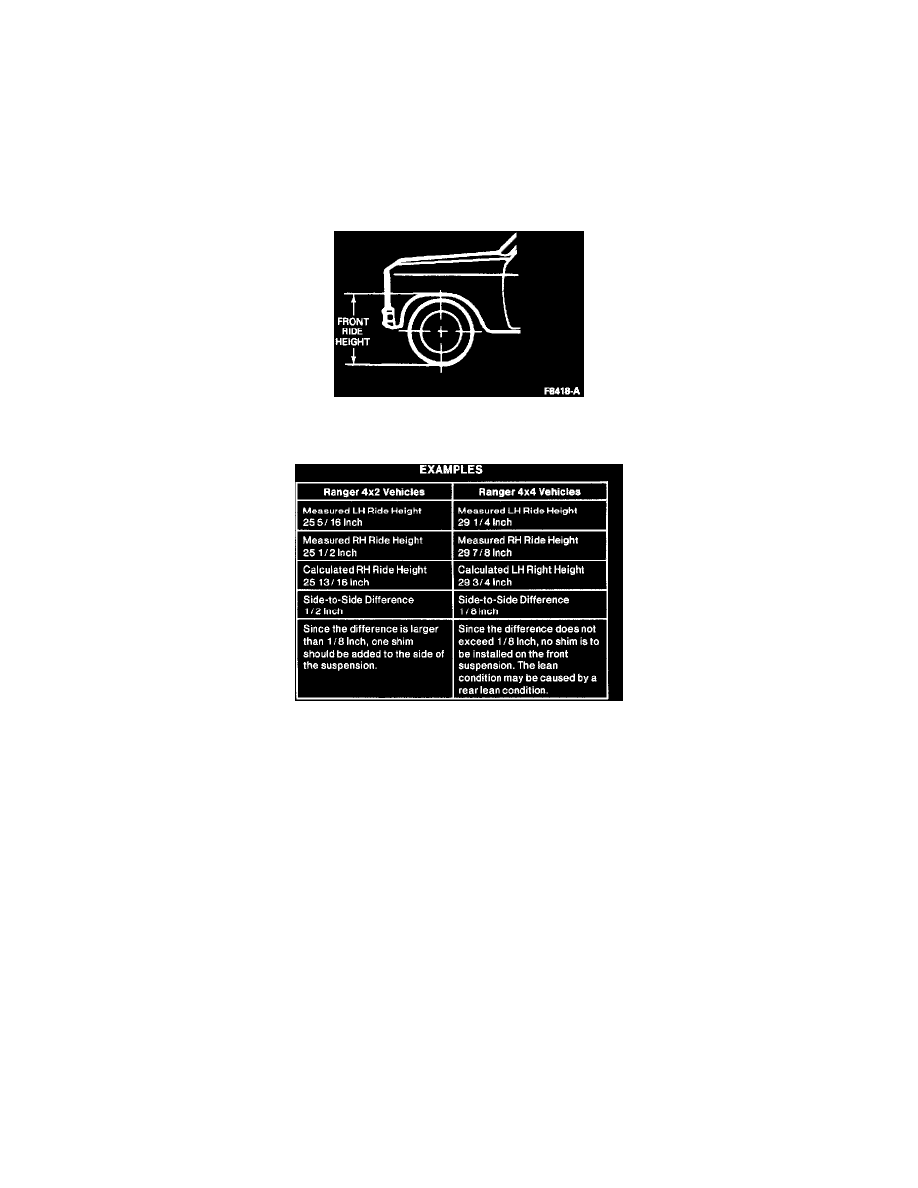Explorer 2WD V6-245 4.0L (1994)

Alignment: Service and Repair
Vehicle Lean Correction
Front Lean
NOTE: Codes identifying the front and rear spring options and springs are printed on the Safety Standard Certification Label. If a spring requires
replacement because of damage or sagging, replace only with the same part as specified on the label. In rare instances, the spring codes will not reflect
the springs as installed due to a DSO option or Assembly Plant substitution. if a DSO option number is shown on the certification label, the district office
can establish whether springs are affected. If the factory-installed springs do not agree with the code printed on the Safety Standard Certification Label
(right and left spring part number should match), it is advisable to replace springs in pairs.
1. Measure the left and right front ride heights by measuring the height of the right and left front fender lip openings. Add 8 mm (5/16 inch) to the
right side ride height measurement.
2. Compute the difference between left and right ride heights as figured in Step 1 above.
a. If the difference exceeds 3-9 mm (1/8-3/8 inch) and is less than 19 mm (3/4 inch) measured at the wheelhouse opening to ground, add 1 shim
to the side of the vehicle that is low.
b. The shim is to be placed under the lower spring seat; service shim (part number 389117-S2) can be used without a front stabilizer bar.
c. If there is a computed side-to-side difference of 19 mm (3/4 inch) or more in the left/right wheelhouse openings, swap front coil springs from
side-to-side. If the lean condition follows the spring (lean now on other side of the vehicle), replace both springs with new ones.
d. Changing front ride height by adding the service shim also affects caster angles. Adding the 4.5 mm thick shim (part number 389117-S2 or
equivalent) may reduce caster by up to 0.40 degrees on the side to which the shim is added.
Rear Lean
With the underslung rear suspension, use of shims will not have any effect on a lean condition. Use the following procedure to verify and correct a rear
lean condition.
1. Measure rear ride height by measuring the height of the right and left rear fender lip openings.
2. Compute the difference.
3. Inspect the vehicle for any excess loads which might weigh the vehicle down on one side more than the other. Usually a weight of at least 50
pounds is required to cause such a lean.
4. If lean condition is not caused by weight, swap the rear springs from side-to-side.
5. If the lean changes sides, the lean condition is most likely caused by a bad spring. Replace both springs.
6. If the lean condition did not change when the springs were changed, factors other than suspension are the cause.
Side-to-Side Lean
